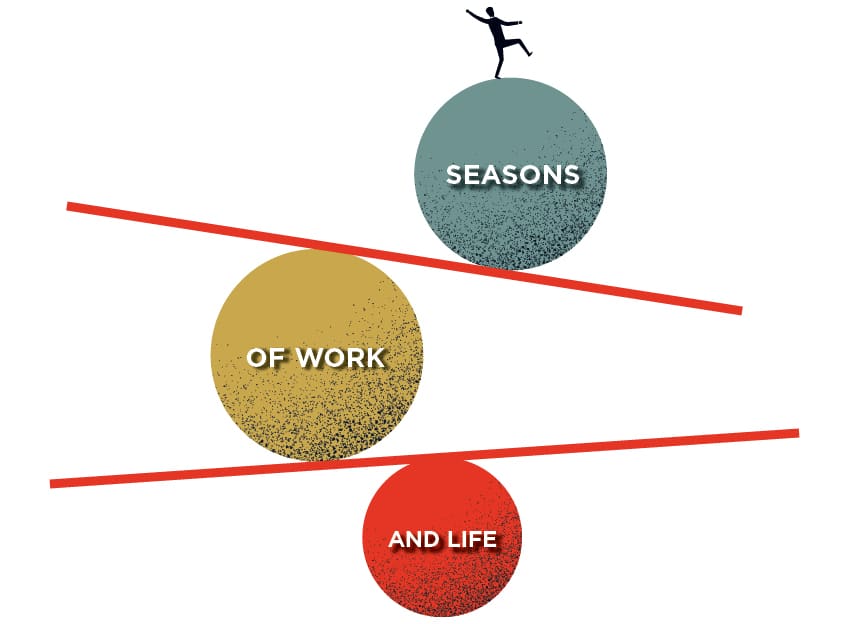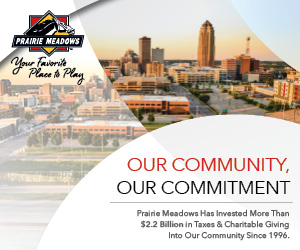5 leaders share their approach to ‘work-life balance’

I’ve heard many derivatives of the term “work-life balance.” There’s “work-life blend” or “work-life harmony” (which you’ll see used by a leader quoted in this piece). But ultimately, regardless of which term you prefer, the concept refers to how one balances work and life responsibilities. For some, work is truly the passion of their lives and it can be hard to see a clear difference between the two. But under various circumstances or time periods, work and life can be at odds.
So how do leaders find the balance themselves, and how do they choose to let their employees do the same?
Last fall, Harvard Business Review writers Alexandra Kalev and Frank Dobbin wrote about studying data from more than 800 U.S. companies over a span of more than 30 years and talking to dozens of managers to understand the effects of an organization’s work-life initiatives. They looked at varying benefits or flexible hours. They found that organizations that offered initiatives meant to allow for better balance in work and life had better retention – and also more diversity.
“When companies had universal policies for family leave time, flexible scheduling and help with child care, the percentages of Black, Hispanic and Asian American male and female managers increased significantly. So did the percentage of white female managers,” Kalev and Dobbin wrote. “Why do those groups benefit so much from work-life support? Because they face the greatest work-life challenges.”
These initiatives were actually more effective for maintaining a diverse workforce than specific inclusion-related programming, they wrote.
I asked a few local leaders to share how they approach “work-life balance” – or whatever phrase they prefer to use when referring to the concept – for themselves and how that translates to the people they lead.
– Emily Barske Wood, special projects editor

Manny Toribio
business development manager, Short Elliott Hendrickson (SEH)
The work-life balance is not a static state, but a dynamic cycle that changes over time. You may need to adjust your balance depending on your circumstances, such as your workload, family responsibilities, health issues or personal goals. In saying that, family-first is the approach I take in all my decision-making and express that freely to those around me, whether friends, business partners, co-workers, etc. So don’t be afraid of saying “no” to commitments to create that intentional impact.

Mike Ralston
president, Iowa Association of Business and Industry
We often discuss in our office that there is work and there is life … and life is so much more important than work. We mean that we value work and what we do very much. But we realize and are thoughtful about making sure we spend time on the “life” part of things. That means family vacations, kids’ soccer games, school concerts, taking care of a spouse recovering from surgery or taking a day to reenergize away from the office. All of that helps us in our work and in our life.

Kristi Knous
president, Community Foundation of Greater Des Moines
I learned early on that work-life blend is a much more realistic and achievable expectation than feeling balanced. I also keep in mind that there are seasons in work and in life; times where more time and focus is justifiably needed and expected in either space. If the seasons begin to run together, then priorities need to shift and the blend needs to be rebalanced.
To support our team, we have flex-time policies to encourage work-life blend. Our flex policies allow modified start or end of workdays, or shorter workdays on Fridays; and we have summer flex Fridays to allow longer workdays enabling two full flex Fridays out of the office each month. We also allow five remote days per month that are flexible depending on work or meeting needs; so our employees could work from a remote location one week per month, or pair it with vacation to take an extended time away from the office. If the position responsibilities aren’t conducive for remote work, we offer a retention bonus twice per year for those positions. This flexibility and support empowers our employees to show up in the ways that are most conducive to their work styles and family needs, and we feel great about supporting their blend.

Dr. Jon Lensing
co-founder and CEO, OpenLoop
Work-life harmony (as I call it) can look very different from week to week, especially in the startup world. For me, it’s all about understanding how I can best operate professionally while leveraging productivity. I know I run best in sprints – both in the daily sense and longer term. Oftentimes this means giving a little more during certain weeks but ensuring that when I’ve reached my limit, I invest time in myself and recharge (because no one benefits from a burned-out boss). Some of my favorite ways to recharge include traveling, playing golf or photography/videography.
One of the biggest ways I encourage work-life harmony among my employees is by offering unlimited PTO and fostering a culture that actually invites employees to use it. It’s proven to be a great way to recharge and come back with fresh ideas to share and try out. From a day-to-day standpoint, OpenLoop promotes weekly or biweekly one-on-one workload check-ins, flexible hours and investing interest in employees’ lives outside of work, including encouraging participation in member groups, volunteering and continued education.

Austin Mac Nab
CEO and founder, VizyPay
When we started VizyPay, every person’s efforts mattered. We needed 110% all the time, so having a work-life balance was something each person had to really prioritize to have. It can look different for people depending on where they’re at in their career, too. Now, six years later and with over 100 employees, we’re able to give our staff time off for birthdays, or weddings, or sporting events, to enjoy life outside of work, and we’re able to encourage a nice work-life balance for them. But that ability didn’t come without the sacrifices made by the first few people here. At VizyPay, we have a work hard, play hard mentality, so even though we ask our staff to grind and give their all when they’re here, we also partake in the fun things in life and want to support each other in that way.

Emily Barske Wood
Emily Wood is special projects editor at Business Record. She covers nonprofits and philanthropy, HR and leadership, and diversity, equity and inclusion.










